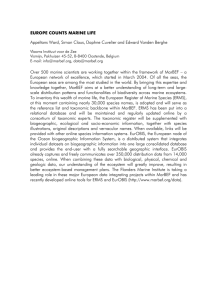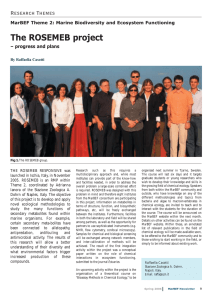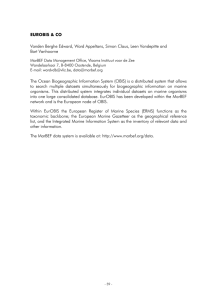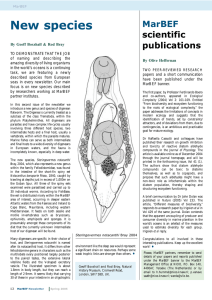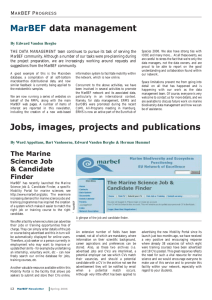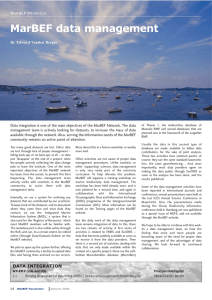Taxonomy Clearing System
advertisement
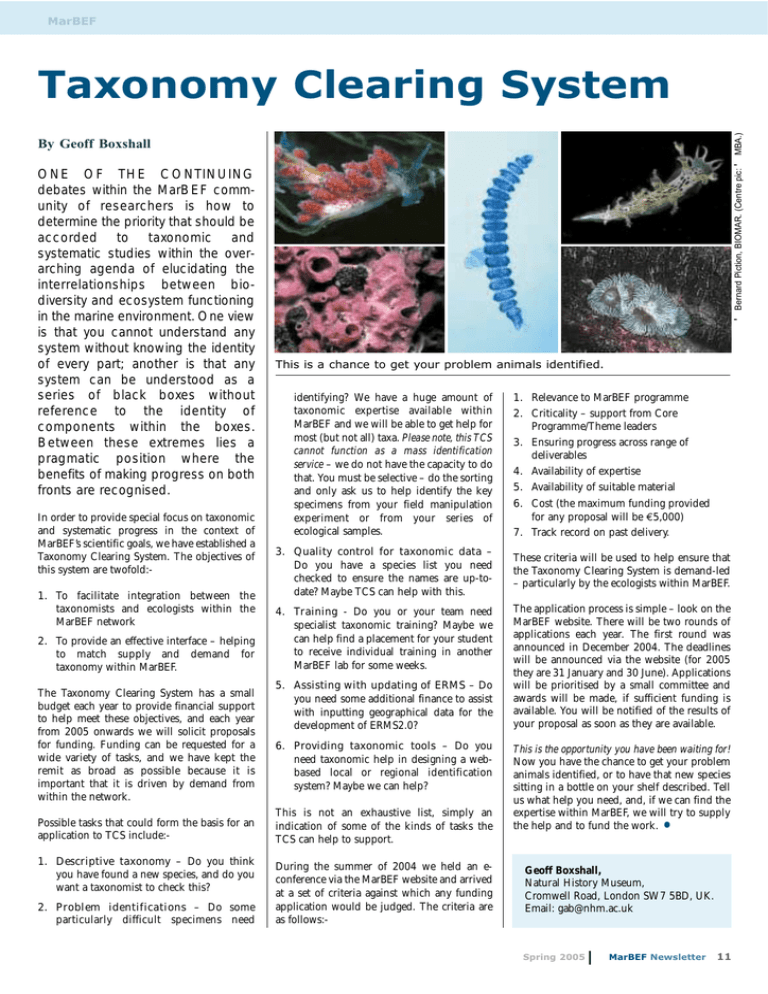
MarBEF MBA.) Taxonomy Clearing System In order to provide special focus on taxonomic and systematic progress in the context of MarBEF’s scientific goals, we have established a Taxonomy Clearing System. The objectives of this system are twofold:1. To facilitate integration between the taxonomists and ecologists within the MarBEF network 2. To provide an effective interface – helping to match supply and demand for taxonomy within MarBEF. The Taxonomy Clearing System has a small budget each year to provide financial support to help meet these objectives, and each year from 2005 onwards we will solicit proposals for funding. Funding can be requested for a wide variety of tasks, and we have kept the remit as broad as possible because it is important that it is driven by demand from within the network. Possible tasks that could form the basis for an application to TCS include:1. Descriptive taxonomy – Do you think you have found a new species, and do you want a taxonomist to check this? 2. Problem identifications – Do some particularly difficult specimens need ' ONE OF THE CONTINUING debates within the MarBEF community of researchers is how to determine the priority that should be accorded to taxonomic and systematic studies within the overarching agenda of elucidating the interrelationships between biodiversity and ecosystem functioning in the marine environment. One view is that you cannot understand any system without knowing the identity of every part; another is that any system can be understood as a series of black boxes without reference to the identity of components within the boxes. Between these extremes lies a pragmatic position where the benefits of making progress on both fronts are recognised. Bernard Piction, BIOMAR. (Centre pic: ' By Geoff Boxshall This is a chance to get your problem animals identified. identifying? We have a huge amount of taxonomic expertise available within MarBEF and we will be able to get help for most (but not all) taxa. Please note, this TCS cannot function as a mass identification service – we do not have the capacity to do that. You must be selective – do the sorting and only ask us to help identify the key specimens from your field manipulation experiment or from your series of ecological samples. 3. Quality control for taxonomic data – Do you have a species list you need checked to ensure the names are up-todate? Maybe TCS can help with this. 4. Training - Do you or your team need specialist taxonomic training? Maybe we can help find a placement for your student to receive individual training in another MarBEF lab for some weeks. 5. Assisting with updating of ERMS – Do you need some additional finance to assist with inputting geographical data for the development of ERMS2.0? 6. Providing taxonomic tools – Do you need taxonomic help in designing a webbased local or regional identification system? Maybe we can help? This is not an exhaustive list, simply an indication of some of the kinds of tasks the TCS can help to support. During the summer of 2004 we held an econference via the MarBEF website and arrived at a set of criteria against which any funding application would be judged. The criteria are as follows:- 1. Relevance to MarBEF programme 2. Criticality – support from Core Programme/Theme leaders 3. Ensuring progress across range of deliverables 4. Availability of expertise 5. Availability of suitable material 6. Cost (the maximum funding provided for any proposal will be €5,000) 7. Track record on past delivery. These criteria will be used to help ensure that the Taxonomy Clearing System is demand-led – particularly by the ecologists within MarBEF. The application process is simple – look on the MarBEF website. There will be two rounds of applications each year. The first round was announced in December 2004. The deadlines will be announced via the website (for 2005 they are 31 January and 30 June). Applications will be prioritised by a small committee and awards will be made, if sufficient funding is available. You will be notified of the results of your proposal as soon as they are available. This is the opportunity you have been waiting for! Now you have the chance to get your problem animals identified, or to have that new species sitting in a bottle on your shelf described. Tell us what help you need, and, if we can find the expertise within MarBEF, we will try to supply the help and to fund the work. • Geoff Boxshall, Natural History Museum, Cromwell Road, London SW7 5BD, UK. Email: gab@nhm.ac.uk Spring 2005 MarBEF Newsletter 11
